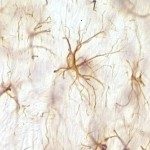Présentation
What we do
Phage display technology enables the selection from repertoires of VHH displayed on the surface of filamentous bacteriophage. Llamas or Alpacas are immunized with antigens provided by the users; once the serum shows an adequate immune response, blood lymphocytes are purified and the VHH genes population is isolated from lymphocytes then converted to phage-display format using PCR. Subsequent transformations usually yield libraries of 107 to 109 clones, each clone corresponding to a specific VHH. The library is panned against the antigen to select specific VHH. These VHH are then expressed in Escherichia coli and their characteristics are analyzed (purity, affinity, specificity).
The affinity of selected nanobodies are performed by biolayer interferometry (Octet HTX) and epitope mapping by HDX-Ms (collaboration with PF RMNbio).




